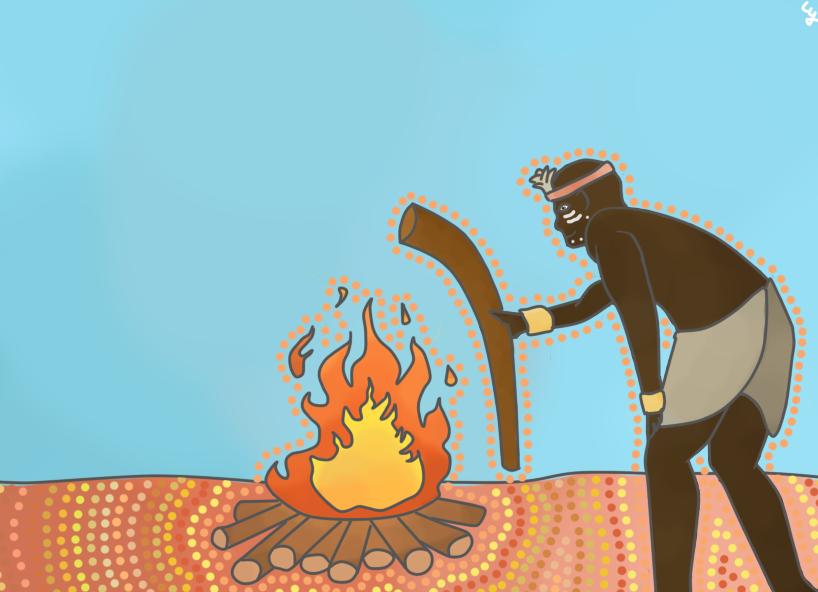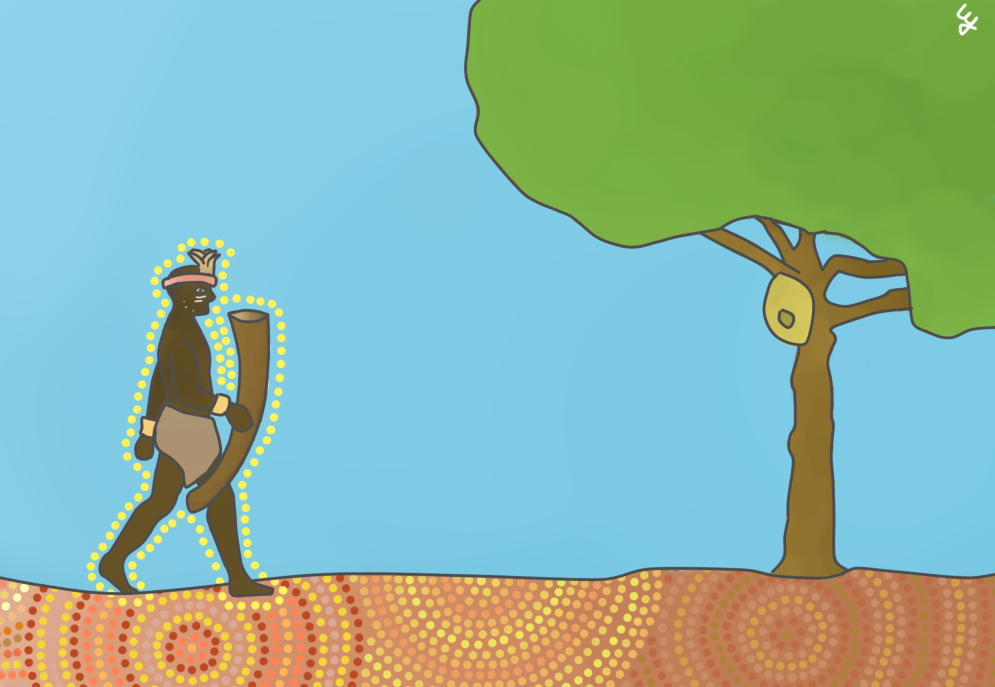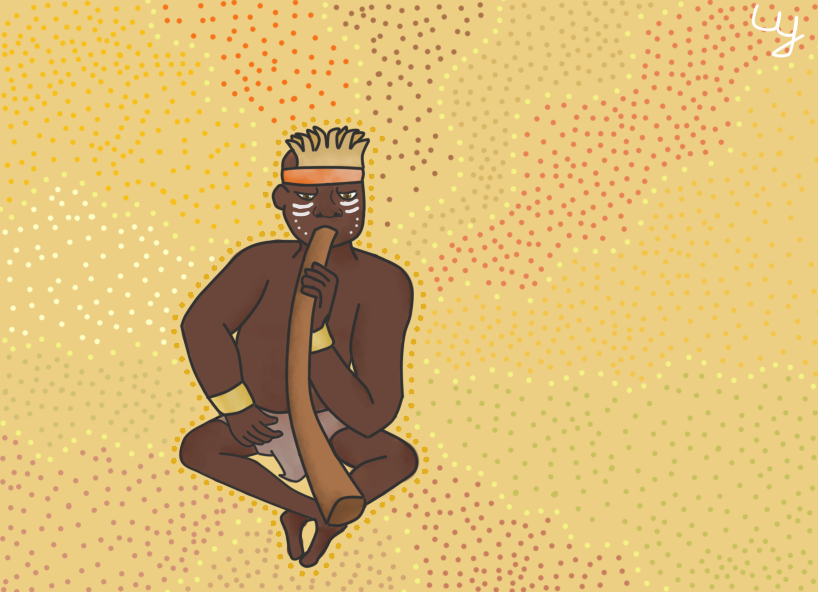THE STORY OF THE DIDGERIDOO
(This is the story of what the non-native people call Didgeridoo and the Aboriginal people call Yidiki.)
LONG AGO IN THE DREAMING, a man called Yidiki, who was a brave warrior, was coming home from the hunt when he saw, lying on the ground at his feet, a hollow branch. A storm had blown it down from a tree. The branch’s larger end was crawling with lots of tiny white termites. Termites are white ants that live in the branches of trees.
Now, curious, Yidiki picked up the hollow branch and blew through the smaller end to send the termites out. The branch made a strange and powerful sound.
His interest grew. Quickly, he made a fire and burned out the rest of the termite nest inside the branch. This made the branch completely hollow.
He then went to a place where there were wild bees and he took some wax from their hive. He molded the wax and shaped the smaller end of the branch to fit his mouth.
Yidiki found that, by practicing breathing in through his nose and out through his mouth at the same time, he could make rhythms, as well as many bird sounds and other animal sounds.
He was very excited, so he took this discovery back to his tribe. When they heard Yidiki play this new instrument, they were delighted by the sounds it made.
They painted themselves and danced to the rhythm of the hollow branch. In time it became very popular and was used for sacred ceremonies and also for healing people who were ill.
During his lifetime, Yidiki the warrior taught many other young men how to play the hollow log.
If you listen to this natural instrument, the sounds will reach and open your heart and lift your spirits, as they have done for the Aboriginal people since the beginning of time.
LA HISTORIA DEL DIGDERIDOO
(Esta es la historia del por qué los no nativos lo llaman didgeridoo y los aborígenes lo llaman Yidiki.)
Hace mucho tiempo, un hombre llamado Yidiki, que era un guerrero vailente, volvía a casa de cazar y vio, tirado en el suelo a sus pies, una rama hueca. Una tormenta la había despegado de un árbol. El orificio más ancho de la rama estaba llena diminutas termitas blancas. Las termitas son hormigas blancas que viven en las ramas de los árboles.
Así que, curioso, Yidiki cogió la rama hueca y soplo por el orificio más pequeño para sacar a las termitas. La rama hizo un extraño y sonido poderoso. Su interés aumentaba. Rápidamente, hizo un fuego y quemó el resto del nido de termitas que había dentro de la rama.
Esto hizo que la rama estuviera completamente hueca. Entonces fue a donde estaban las abejas salvajes y cogió un poco de cera de la colmena. Le dio forma a esta cera y la colocó en el orificio más pequeño para que se ajustase a su boca.
Yidiki descubrió que, practicando la respiración del aire por la nariz y expulsándolo por la boca al mismo tiempo, el podía crear ritmos, así como muchos sonidos de pájaros o de cualquier otro animal.
Estaba tan emocionado, que se llevó el descubrimiento en su camino de vuelta a la tribu. Cuando escucharon a Yidiki tocar este nuevo instrumento, les encantó tanto los sonidos que hacía. Se pintaron y bailaron al ritmo de la rama hueca. Con el tiempo se hizo muy famoso y fue usado para ceremonias sagradas y para curar a las personas enfermas.
Durante su vida, Yidiki el guerrero enseño a muchos otros hombres jóvenes como tocar ese tronco hueco. SI escuchas tocar este instrumento natural, los sonidos te llegaran y abrirán tu corazón despertarán tus espíritus, así como lo ha estado haciendo con los aborígenes desde el principio de los tiempos.
Drawings by Lidiya Yohan Tsolova, 2º A:







